Considerations such as market demand, time to market, regulations, supplier and infrastructure issues are essential in choosing new manufacturing locations.
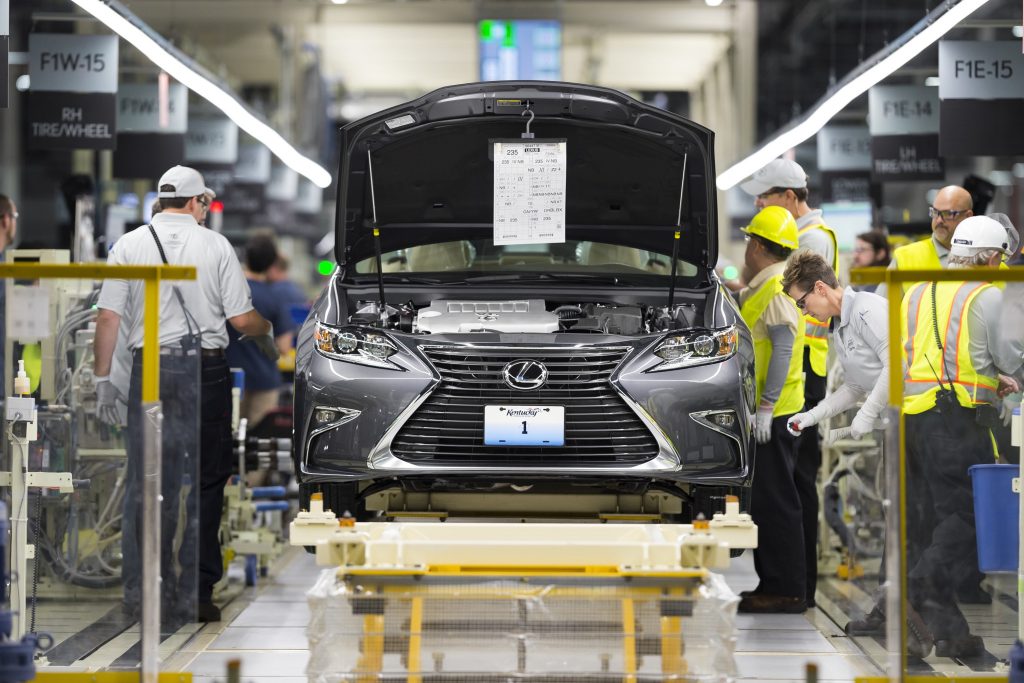 Considerations such as market demand, time to market, regulations, supplier and infrastructure issues are essential in choosing new manufacturing locations. Anthony Coia andChristopher Ludwig
Considerations such as market demand, time to market, regulations, supplier and infrastructure issues are essential in choosing new manufacturing locations. Anthony Coia andChristopher Ludwig
Determining the location for a vehicle production operation is no straightforward matter. While the major pull for a carmaker is usually based on serving a particular sales region, as well as costs relating to labour, taxes and incentives, manufacturers consider many factors, not least those related to supply chain and logistics. These include a potential location’s transport infrastructure, its proximity to tier suppliers, local government incentives and regulations, currency exchange rates, free-trade deals, access to logistics services and the suitability of the local labour pool.
In this story…
[sta_anchor id=”1”]Setting up a new vehicle platform or new model line at an existing site can be just as complex for supply chain planning as building a new plant. Shifting a model to another location means that suppliers must migrate or expand to supply the plant, for example. A new model may also require considerable investments in local infrastructure and equipment at legacy plants, including new material sorting centres, specialised packaging and more yard space or rail tracks.
Market demands and economics are usually at the sharp end of plant decisions. In North America, low fuel prices are contributing to a boom in SUV and crossover sales, leading many manufacturers to increase output of such vehicles. The Volkswagen Group, for example, is adding a new ‘B’ segment, midsized SUV at its plant in Chattanooga, Tennessee along with a long-wheelbase version of the Tiguan SUV to its plant in Puebla, Mexico; it is also moving production of the Audi Q5 SUV from Ingolstadt, Germany to a new plant in San José Chiapa, about 70km from Puebla.
Volvo Car Group, meanwhile, has opened two new assembly plants in China, in Chengdu in the south-west, and Daqing in the north-east, to serve the Chinese market, which is increasingly important to Volvo since it came under Geely ownership in 2010. As well as expanding its existing plants in Europe, the carmaker is building a new plant in Charleston, South Carolina to meet North American demand with shorter lead times and from the dollar zone, according to Ulf Nordelöf, senior director of industrial strategy for the group.
However, it is still a confluence of factors in addition to sales markets that ultimately decide locations. Jan Bures, executive vice-president for group aftersales and services at Volkswagen Group of America, says the OEM’s investments in North America have been driven by market demand and ambition, existing infrastructure, the supplier base and labour force, as well as economics and regulations. Mexico, for example, is not only favourable due to its proximity to the US and South America – for which it also benefits from trade dealers – but Volkswagen also has an established supplier base in the Puebla region, he says.
“With the surge in lower fuel prices, high spikes in market segments such as compact SUVs or subcompact SUVs in the US and Canada can, in conjunction with legislative requirements, influence decisions in favour of plants with the necessary infrastructure, tooling and suppliers,” says Bures.
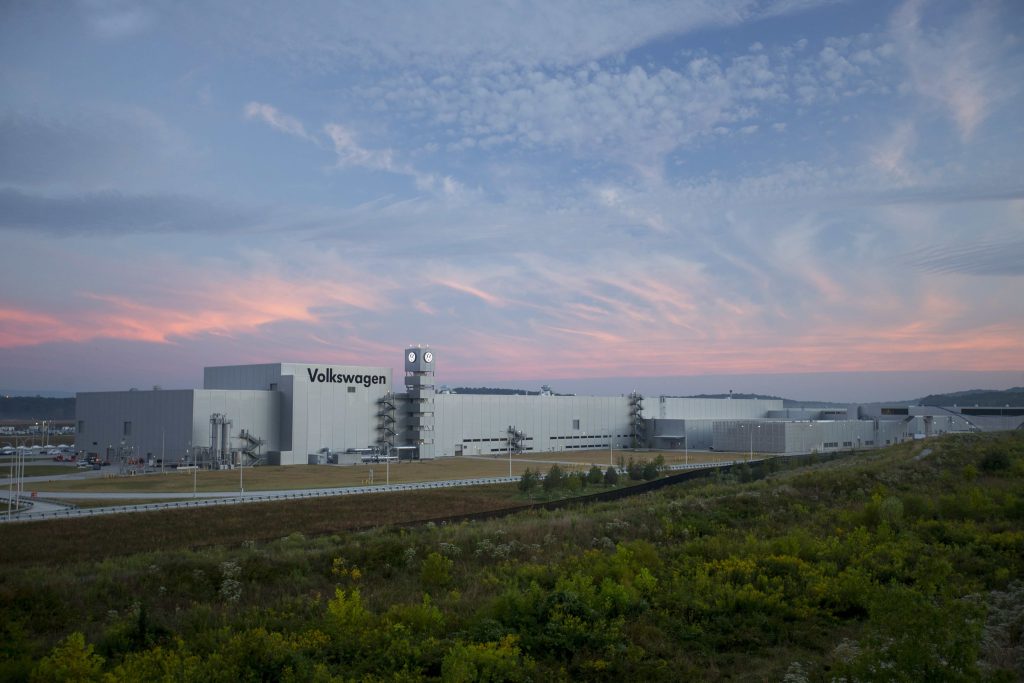
Logistics, meanwhile, played a decisive role in determining Ford’s location of a new $1.6 billion factory in San Luis Potosi, in central Mexico, which will build small cars starting in 2018. “I would say that logistics and the supply chain were the driving force behind the decision and the location in the San Luis Potosi region,” says Gabriel López, president and chief executive officer at Ford Mexico.
At Toyota, which is in the midst of an important production realignment in North America, as well as building a new plant for small cars in Apaseo El Grande, in the Mexican state of Guanajuato, location decisions come down to several factors, says Brian Krinock, senior vice-president for vehicle plants at Toyota Engineering and Manufacturing North America (TEMA). He points to the supply base, labour and workforce skills, relationship to the community and finished goods movement. For example, in choosing Guanajuato, Toyota looked at access to the site and logistics capacity, including northbound and southbound rail transport availability.
[sta_anchor id=”2”]All that comes before logistics However, logistics does not always end up as high on the priority list as a supply chain expert might wish. In North America, for example, plans by the likes of General Motors and Fiat Chrysler to build more SUVs and trucks at their US plants are more about producing higher-profit vehicles at more expensive locations than necessarily using the most efficient supply chain.
To avoid larger investments in more permanent sites or expansions, some carmakers also turn to contract manufacturing locations based outside their traditional supply chain and distribution networks. From a logistical point of view, these can sometimes appear inefficient, if not bizarre. For example, Daimler uses the Valmet assembly plant in Finland – some distance from most of its suppliers or customers – to build additional A Class models, and next year it will add incremental output of the GLC crossover there. In the US, the company is also using AM General to build R-Class vehicles at its plant in Indiana. exclusively for export to China.
While demand or economic changes can push or pull plant decisions, government policy also has significant effects, adds Jan Bures. He notes that regulatory change can stimulate demand for electric vehicles in parts of the world, and may eventually influence production choices, too. This spring, for example, the German government, together with German-based carmakers, unveiled a plan to offer subsidies to consumers to buy electric vehicles. Meanwhile, much stricter fuel requirements in the US, starting from next decade, could push the market further towards hybrid and electric vehicles.
Government influence can be stronger than that of logistics in other ways too. In China, the government’s control over licensing production locations, as well as central and municipal incentives, have encouraged carmakers to expand beyond traditional industrial and consumption centres on the east coast, including to the west and north. In some cases this has benefitted customer service or diversified the supply base, however it has also landed plants far from existing networks. Perhaps the most extreme example is at Shanghai Volkswagen, which was lured in part by government incentives to open a plant in Urumqi, in China’s far western region, assembling vehicles from knockdown kits made more than 5,000km away in Shanghai.
In some cases, such as for Russia and Brazil, government policy has been a mixture of protectionist blocks on imports together with incentives to build locally. Elsewhere, central or state governments compete within a country to roll out the red carpet to manufacturers. Volker Vossler, vice-president of operations at Seglo-Schnellecke Logistics, the Mexican division of Germany’s Schnellecke Logistics, confirms such incentives have encouraged investment in Mexico. “The government offers tax-exempt land to OEMs, making incentives one of the most important factors in site selection,” he says.
[sta_anchor id=”3”]You can’t invest billions without a logistics plan Regardless of whether a manufacturing decision is the most practical for logistics, after it is made, supply chain experts and logistics providers must implement the most optimal plan possible, ensuring that savings in one area, like labour or purchasing, are not undone by transport or inventory costs. According to Bures, the Volkswagen Group can save around one-third in total logistics costs by serving the US market from Mexico compared to serving it from Europe. However, quality issues, engineering costs or transport delays can overwhelm these and other savings if the supply chain is not developed and executed properly.
“We need to set up our logistics system in such a way that labour costs do not overshadow advantages in proximity. We need qualified labour and we need to invest in training,” says Bures.
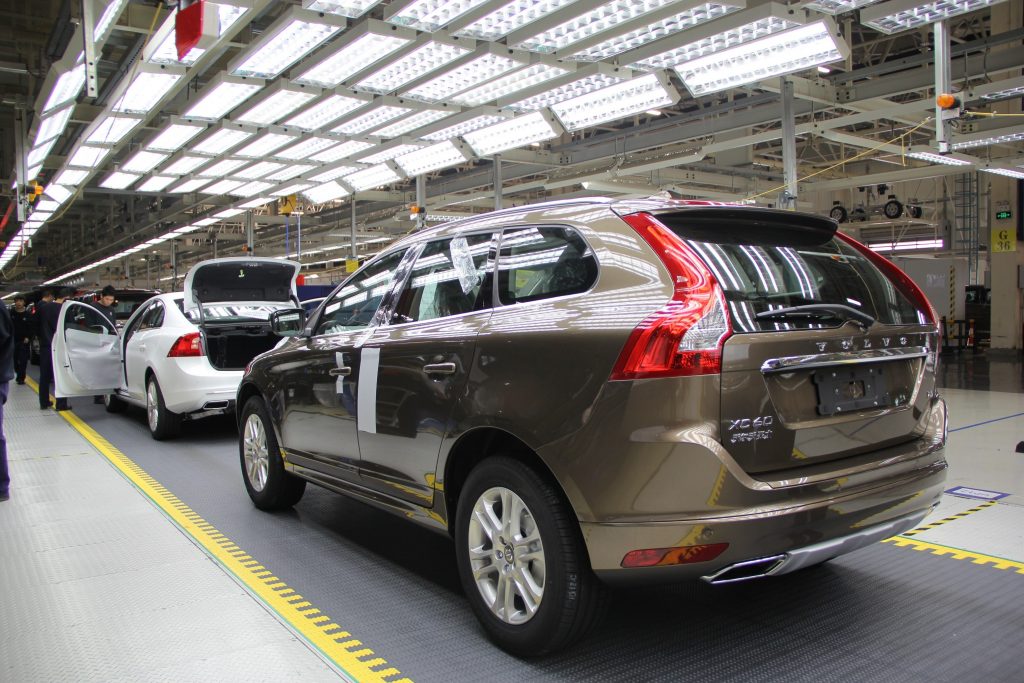 Volvo’s production of the long-wheelbase S60 (above) in Chengdu (left) for sale in the US shows that proximity is not an overriding factor in plant location.
Volvo’s production of the long-wheelbase S60 (above) in Chengdu (left) for sale in the US shows that proximity is not an overriding factor in plant location.Despite some examples to the contrary, inbound and outbound logistics planning is central to bringing supply and demand together. That is why behind today’s most significant investments – including billion dollar or more new plant or expansion projects – a clear logistical logic can usually be discerned.
Christian Seidl, director of automotive for western Europe at Imperial Logistics International, agrees that, once proximity to market has been considered, OEMs needs to consider access to qualified personnel, good infrastructure and proximity to suppliers. Appropriate inbound and outbound networks with the right levels of stability and responsiveness will play an essential role, he adds.
“The primary need is to ensure that the relevant infrastructure is in place – ports, roads, railway links, and airports – in order to safeguard supplies and disposal services even in difficult situations,” he says.
For example, though there are powerful economic, labour and market forces driving Ford, along with its rivals, to reorder the production network and build more larger vehicles in the US and smaller cars in Mexico, the company chose San Luis Potosi based on a variety of specific logistics and infrastructure considerations.
For one thing, it was important to choose a location with the lowest possible running costs for inbound logistics and San Luis Potosi, together with the neighbouring El Bajio region, has the highest concentration of suppliers in the country. “It is the centre of gravity of the Mexican supply base,” says Ford’s Gabriel López.
Other carmakers seem to agree. The Ford plant will be virtually next door to a new BMW plant for small cars that will open by 2019; GM’s existing plant in San Luis Potosi, which will also be expanded in the coming years, is around 3km away.
Thanks to its positioning, López anticipates that San Luis Potosi will be Ford’s most localised plant in Mexico compared to its existing sites in Hermosillo, in the north-west of the country, or in Cuautitlán, close to Mexico City. It also benefits from good intermodal connections to the US and to seaports. San Luis Potosi has already been the site of an important consolidation and crossdock for Ford, where suppliers from Mexico, the US and overseas are consolidated for distribution to its plants; Mexican suppliers are also consolidated here for export.
Outbound transport consideration is also important, not just because of regional proximity, but also the specific infrastructure and access to a location. López says that Ford also chose San Luis Potosi because it already had direct railway access straight to the US close to the location. Volkswagen, meanwhile, invested nearly $7m to upgrade and adapt its rail yard and tracks to ensure it could handle the new model in Chattanooga, according to Jan Bures.
[sta_anchor id=”4”]Producing in clusters Understanding how a new plant – or a relocated model or vehicle platform – fits into the wider supply chain network is clearly important in choosing and planning production locations. This connection will be crucial to Ford as it concentrates more small car production in Mexico and further aligns its suppliers here (the carmaker is also expanding engine and transmission production for smaller vehicles in Mexico).
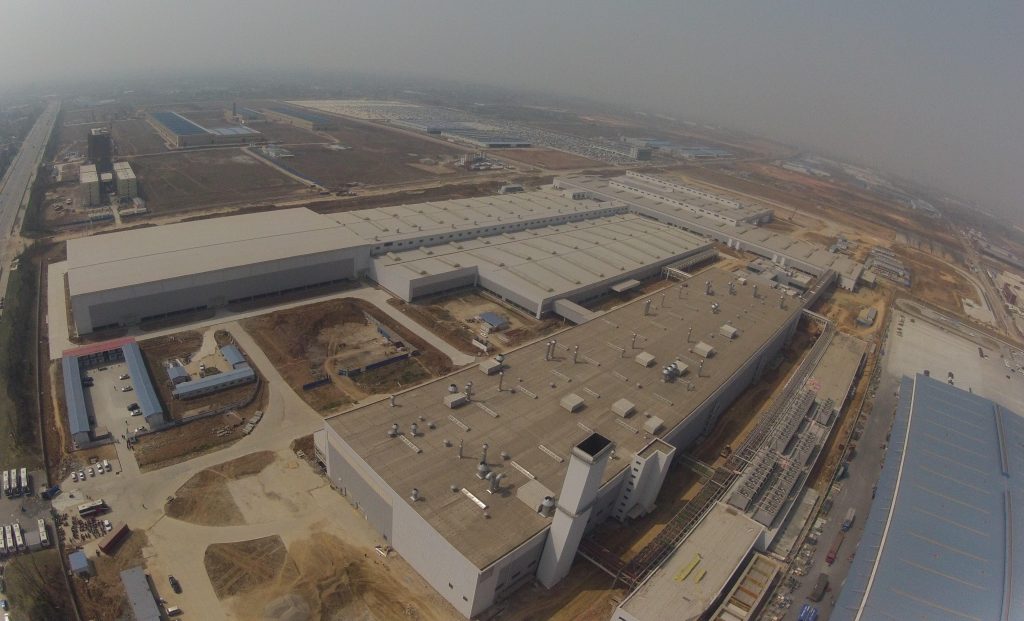 Volvo Car Group, has opened two new assembly plants in China, in Chengdu in the south-west (pictured), and Daqing in the north-east, to serve the Chinese market.
Volvo Car Group, has opened two new assembly plants in China, in Chengdu in the south-west (pictured), and Daqing in the north-east, to serve the Chinese market.Toyota is also regrouping its production by platform type according to geographic clusters in North America, with logistics playing a huge role in establishing where to base models and source components, according to TEMA’s Brian Krinock.
The company is undergoing a number of important changes as it introduces its Toyota New Global Architecture (TNGA), a modular platform introduced in April 2015 and designed to encourage the use of common parts across different lines. TNGA also includes advances in assembly automation, material handling and flexibility. As it introduces this new system, Toyota is taking a more holistic approach to choosing assembly locations, according to Krinock, including looking across the supply base, the product itself and regional demand. Toyota will eventually produce midsize and luxury vehicles in the US Midwest and Canada, smaller vehicles in the south of the US and Mexico, and trucks close to either side of the border between its plant in San Antonio, Texas and Baja California, Mexico.
The first major change will come by 2019 as Toyota shifts production of its smaller Corolla model from its Cambridge plant in Ontario to a new plant in Mexico, which will be the first Toyota plant built entirely according to TNGA principles. Its facility in Blue Springs, Mississippi will continue producing the Corolla, creating a connected supply chain in the south and in Mexico, says Krinock.
“Our new plan is a several-year undertaking. We began with the TNGA programme with Prius production in Japan last summer,” he says. “Now, we are moving forward with midsize platform concentration [at plants] in Canada, Kentucky and Indiana.”
As it makes changes to its production network, TEMA is also focusing on logistics improvements, such as how to load more parts per package without incurring damage.
“We are looking at the size of the parts and reducing the dunnage weight,” he explains. “Some parts are difficult to pack; but perhaps we could do subassembly [of those] in-house instead of off-site. At our San Antonio, Texas plant, on-site production reduced costs by bringing large components closer – mainly as JIT deliveries.”
At Volvo Cars, logistics has also influenced production expansion at both its traditional manufacturing base in Sweden and Belgium, as well as for China and the US. While market demand has encouraged it to invest in new locations, Ulf Nordelöf points to other influences, including transport, packaging, customs and trade barriers, capital efficiency and response times across the supply chain. “We also look at inbound flows and outbound flows, like the shipping distances and frequency of the various transport modes,” he adds.
Another important factor has been a new platform strategy. Volvo’s Scalable Product Architecture (SPA), for example, undergirds larger products, including the new XC90 SUV, which was launched at the carmaker’s Torslanda plant, outside Gothenburg, Sweden in 2014. A premium sedan, also based on the SPA, is being launched from the carmaker’s factory in Daqing, China.
Next year, the carmaker will launch its first model based on its Compact Modular Architecture (CMA), co-developed with Geely, for smaller vehicles. All future Volvo products will then be based on CMA or SPA. Partly in response to this complexity, the carmaker has created in-house logistics management teams to plan, source and engineer inbound and outbound logistics, and has implemented a global transport management system, including most recently in China.
As Volvo rolls out new platforms, however, it will have to balance existing capacity and models with demand. “Several of Volvo Cars’ plants have a mixed setup, with multiple platforms. If the plant is already in high utilisation, what will be the available capacity? We may need to change the platform architecture to accommodate demand,” Nordelöf says.
[sta_anchor id=”5”]Don’t underestimate the outbound costs While the inbound logistics chain and supply base may have more technical considerations, vehicle logistics operations are particularly critical, suggests Volkswagen’s Jan Bures. OEMs face steep costs for holding, shipping, maintaining and transporting vehicles. High outbound logistics costs and disruptions can, ultimately, offset any production cost efficiencies, he warns.
In particular, carmakers need to pay attention to transport access and equipment capability for moving vehicles at given locations. “Outbound transportation infrastructure may be a more important consideration than inbound infrastructure, which seems to be more robust,” Bures comments.
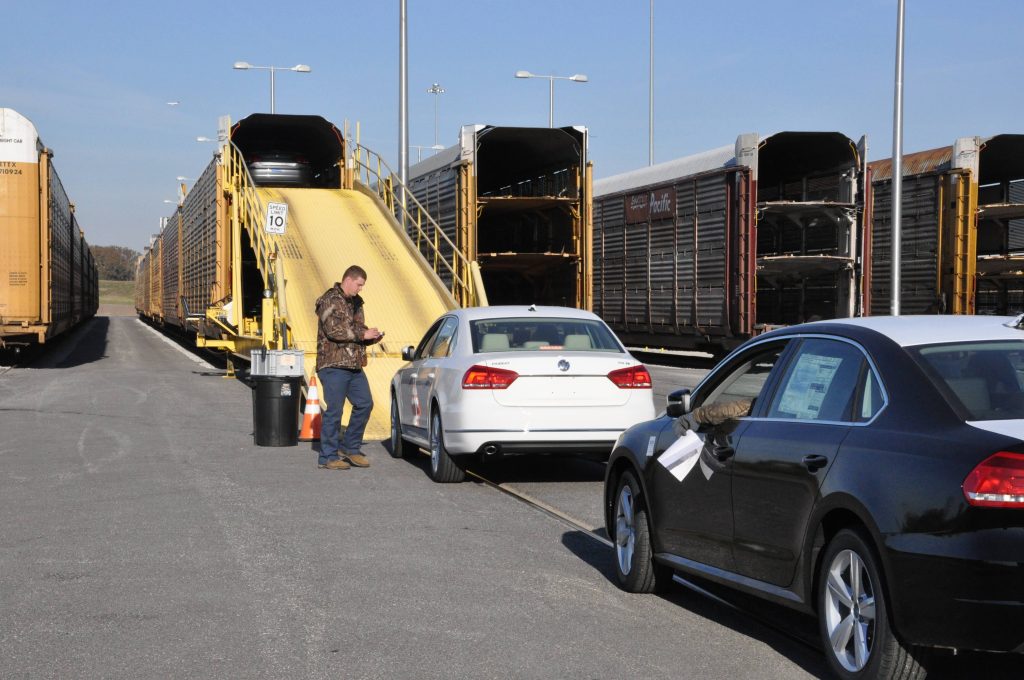 Outbound infrastructure is a vital component, with VW investing almost $7m in rail capability in advance of new SUV production at Chattanooga.
Outbound infrastructure is a vital component, with VW investing almost $7m in rail capability in advance of new SUV production at Chattanooga.Stephen Fleetwood, director of global corporate services at real estate consultancy CBRE, agrees that outbound considerations can trump those of inbound, especially in speed to market. “Outbound logistics is far more important – it is about getting the finished vehicle as near to the sales market as possible,” he stresses.
On the inbound side, Fleetwood points out, major component manufacturers tend to locate near OEM plants, helping them to secure a dependable supply over relatively short geographical distances. For suppliers in far-flung locations, knockdown kit processes for parts or vehicles can make such distances less important, at least for lower volume production or during a ramp-up phase. Ultimately, he argues that logistics processes are usually more flexible for inbound than for outbound.
Bures points to the rail routes Volkswagen uses to ship finished vehicles from its Puebla plant to Houston and San Diego to illustrate how complex outbound transport can be. Because of the delays in rail movements it can encounter due to theft and vandalism in Mexico, the carmaker is considering countermeasures up to and including armed guards. “While we examine every cent spent on manufacturing under a magnifying glass, cost advantages early in the value chain can easily be absorbed by higher [outbound] logistics costs,” he says.
Rail considerations were vital to Ford’s plant decision, especially the rail link to the US from San Luis Potosi, says Gabriel López. This link will be extended to the plant for a dedicated operation, he adds, however the proximity of the main line is important. Other plants in Mexico lack these links or are struggling to complete direct rail access to their plants in good time, including in the Bajio region, or at Kia’s new plant in Monterrey, which recently began mass production temporarily without a direct link.
Transport investments at plant yards are especially important considerations, and can be more complex than simply having space for trucks or rail wagons. At the Chattanooga plant, from which the Volkswagen Passat sedan currently ships on tri-level rail wagons, Bures says the new SUV will move in bi-level wagons that require a second, separate track – a substantial investment.
[sta_anchor id=”6”]No guarantees There isn’t a single ‘X’ factor that determines a plant location. Though labour costs are important, they matter little if a region lacks the supply base and transport links to serve customers. Nor does proximity determine every production decision. Despite its localisation strategy, for example, last year Volvo Cars started exporting a long-wheelbase version of the S60 to the US that is built in Chengdu.
And while governments have a lot of influence, too many incentives can distort the supply chain by stretching it across disparate locations, hurting overall efficiency – and they can rarely overcome deficits in demand or skill. Incentives can also cause issues if planning is poor or promises are not met. Mexico is currently facing some of these challenges, especially as its government struggles with a financing shortage following the falls in the price of oil, which is important to Mexico’s economy and public finances.
“The problem is how the infrastructure in states such as Guanajuato will handle the high volumes expected in the next five years,” says Seglo’s Volker Vossler. “The infrastructure required would lag behind even if development were to begin now. There is a strong need for [extra] port capacity, vehicle transporters, and so on… But the good news is that a lot of infrastructure investment is now underway.”
Advances in automation and technology may change the calculations that determine production locations. Robots could replace more labour, for example. CBRE’s Stephen Fleetwood cites the use of 3D-printing technology that, while still in its infancy, could eventually reduce logistics costs by bringing parts production closer to the customer’s premises.
Those changes might be quite some way off, however. For the foreseeable future, the ability to connect to both suppliers and customers will remain critical to where future OEM operations are set up, while logistics experts will have to constantly find the best ways to improve supply to and from a location – no matter how little it might have been thought about in the first place.


























![Global[1]](https://d3n5uof8vony13.cloudfront.net/Pictures/web/a/d/s/global1_726550.svgz)












